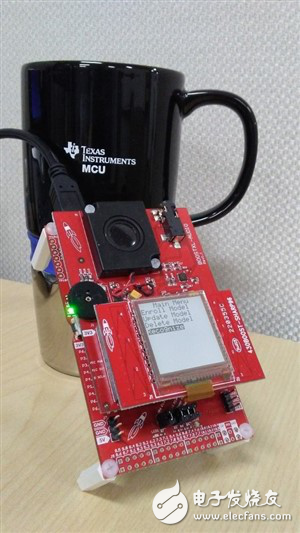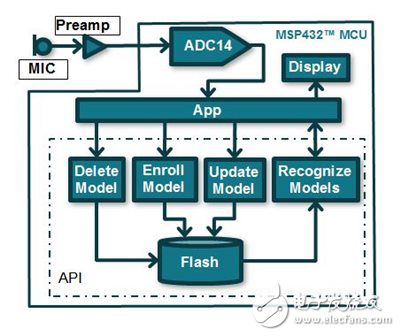In the world of Internet of Everything, more and more electronic devices that understand voice content are gradually entering our sight. In devices such as smartphones, tablets, and laptops that have Siri or Cortana applications, speech recognition can help users search for answers or control surrounding electronics. Although these applications are eye-catching, they take up a lot of processing power and memory. Therefore, it is not surprising that misunderstandings about microcontrollers (MCUs) that are too small to recognize speech.
That's right, the MCU's low-power and small-size design makes it difficult to understand all the voice content, but for small, low-power embedded applications, you might just need to identify a few well-defined phrases, such as "Give me coffee" or "turn off the lights" and so on. Recently, Texas Instruments demonstrated this feature on the low-power MSP432TM MCU demonstrated at CES.

TI has also released a library of speech recognizers written in C code that enables MSP432 MCU-based applications to recognize speech phrases that are frequently used by users, with up to 11 recognizable phrases ignoring other voice content. . Although the user must repeat the phrase that he or she wishes to be recognized several times during the setup, once this step is successfully completed, the latter can be used smoothly.
This speech recognizer library has many desirable features, such as:
· Users can change their phrases at any time
· Users can set the recognizer to respond only to a few phrases
· Of course, users can also delete certain phrases in the phrase library according to their personal needs.
In addition, along with the speech recognition library, there are some easy-to-use header files and user and API guides to help users get started quickly. The download also includes sample demos for the MSP432 MCU LaunchPadTM development kit, the Audio BoosterPackTM plug-in module, and the Sharp or Kentec LCD BoosterPack kit.
This demo application collects voice through a 14-bit analog-to-digital converter (ADC14) integrated in the MSP432 MCU, as well as a liquid crystal display (LCD) for displaying menus. This menu can successfully run the recognition function, the user can choose:

• First, say a phrase that you want the recognizer to remember. The recognizer will generate a model for this voice and store it in flash memory (a task called registration).
· Say the registered phrase again. The recognizer will use it to make a better model to improve performance (a task called update).
· Delete the first model registered
·Run recognition function
After understanding the MCU's ability in speech recognition, is it eager to use these voice-activated, MCU-based applications and devices? Hurry to customize a voice recognition application based on the MCU!
Optical fiber transceivers are generally used in actual network environments where Ethernet cables cannot be covered and optical fibers must be used to extend the transmission distance. At the same time, they also play a huge role in helping to connect the last mile of optical fiber lines to metropolitan area networks and outer networks. The role of. With the optical fiber transceiver, it also provides a cheap solution for users who need to upgrade the system from copper wire to optical fiber, and for users who lack funds, manpower or time. The function of the optical fiber transceiver is to convert the electrical signal we want to send into an optical signal and send it out. At the same time, it can convert the received optical signal into an electrical signal and input it to our receiving end.
1G Bidi Transeciver,Bidi Transceiver Ic,Bidi Optical Transceiver,Bidi Transeciver For Sale
Nanjing Jisu Shitong Technology Co., Ltd , https://www.netairs.com